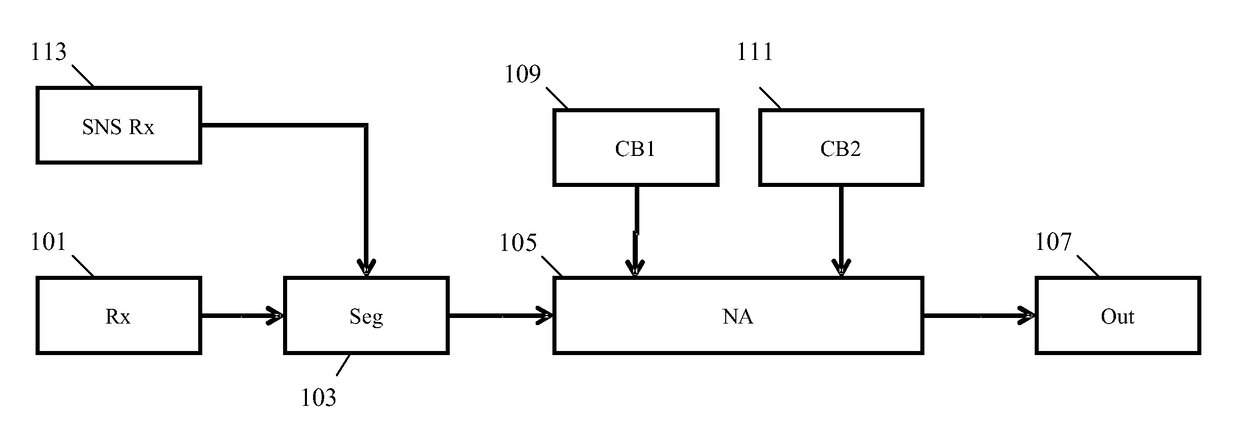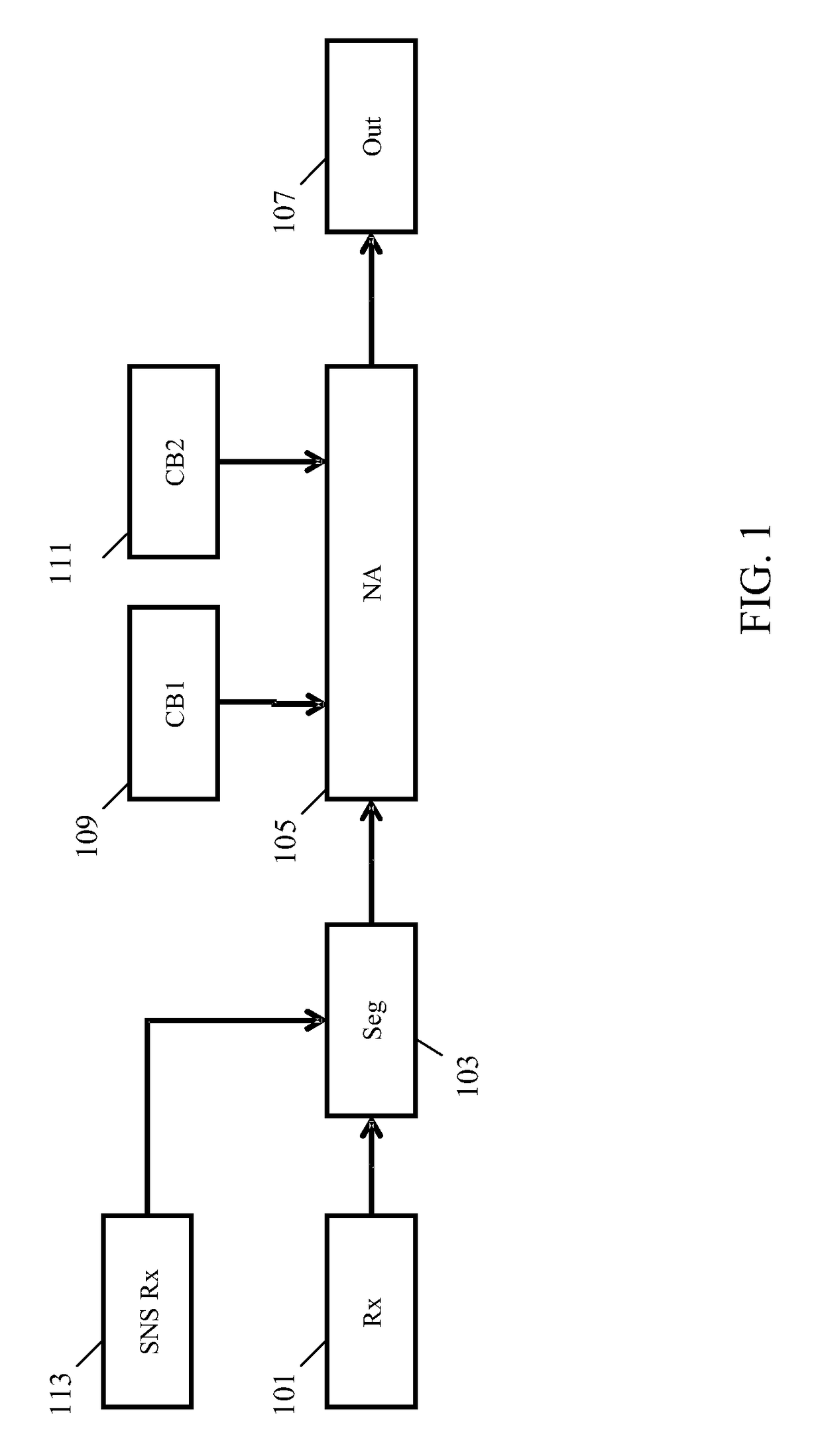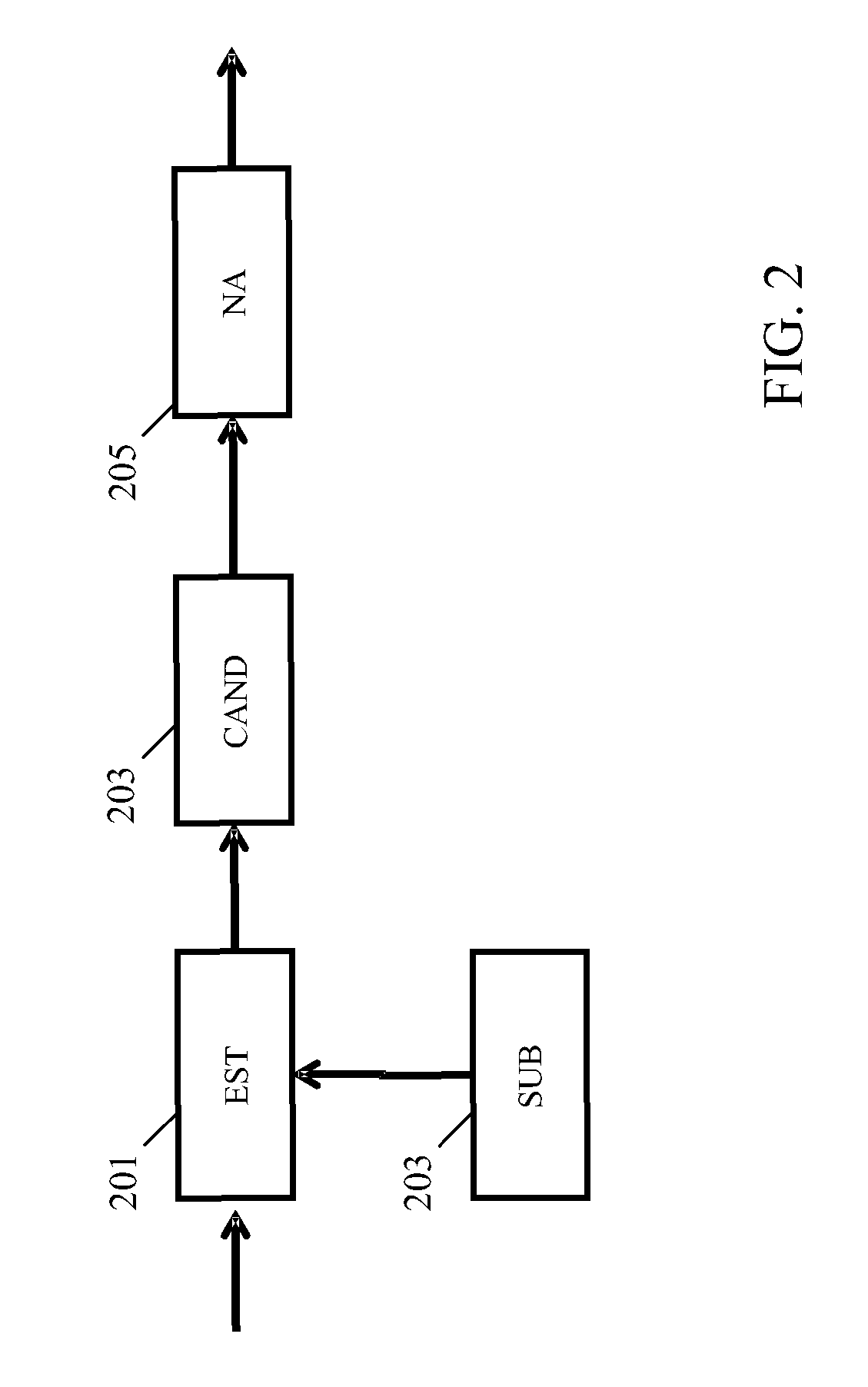Signal noise attenuation
a signal and noise technology, applied in the field of signal noise attenuation, can solve the problems of difficult to achieve the effect of reducing complexity, facilitating operation, and improving performan
- Summary
- Abstract
- Description
- Claims
- Application Information
AI Technical Summary
Benefits of technology
Problems solved by technology
Method used
Image
Examples
Embodiment Construction
[0057]The following description focuses on embodiments of the invention applicable to audio noise attenuation and specifically to speech enhancement by attenuation of noise. However, it will be appreciated that the invention is not limited to this application but may be applied to many other signals.
[0058]FIG. 1 illustrates an example of a noise attenuator in accordance with some embodiments of the invention.
[0059]The noise attenuator comprises a receiver 101 which receives a signal that comprises both a desired component and an undesired component. The undesired component is referred to as a noise signal and may include any signal component not being part of the desired signal component. The desired signal component corresponds to the sound generated from a desired sound source whereas the undesired or noise signal component may correspond to contributions from all other sound sources including diffuse and reverberant noise etc. The noise signal component may include ambient noise ...
PUM
 Login to View More
Login to View More Abstract
Description
Claims
Application Information
 Login to View More
Login to View More - R&D
- Intellectual Property
- Life Sciences
- Materials
- Tech Scout
- Unparalleled Data Quality
- Higher Quality Content
- 60% Fewer Hallucinations
Browse by: Latest US Patents, China's latest patents, Technical Efficacy Thesaurus, Application Domain, Technology Topic, Popular Technical Reports.
© 2025 PatSnap. All rights reserved.Legal|Privacy policy|Modern Slavery Act Transparency Statement|Sitemap|About US| Contact US: help@patsnap.com



